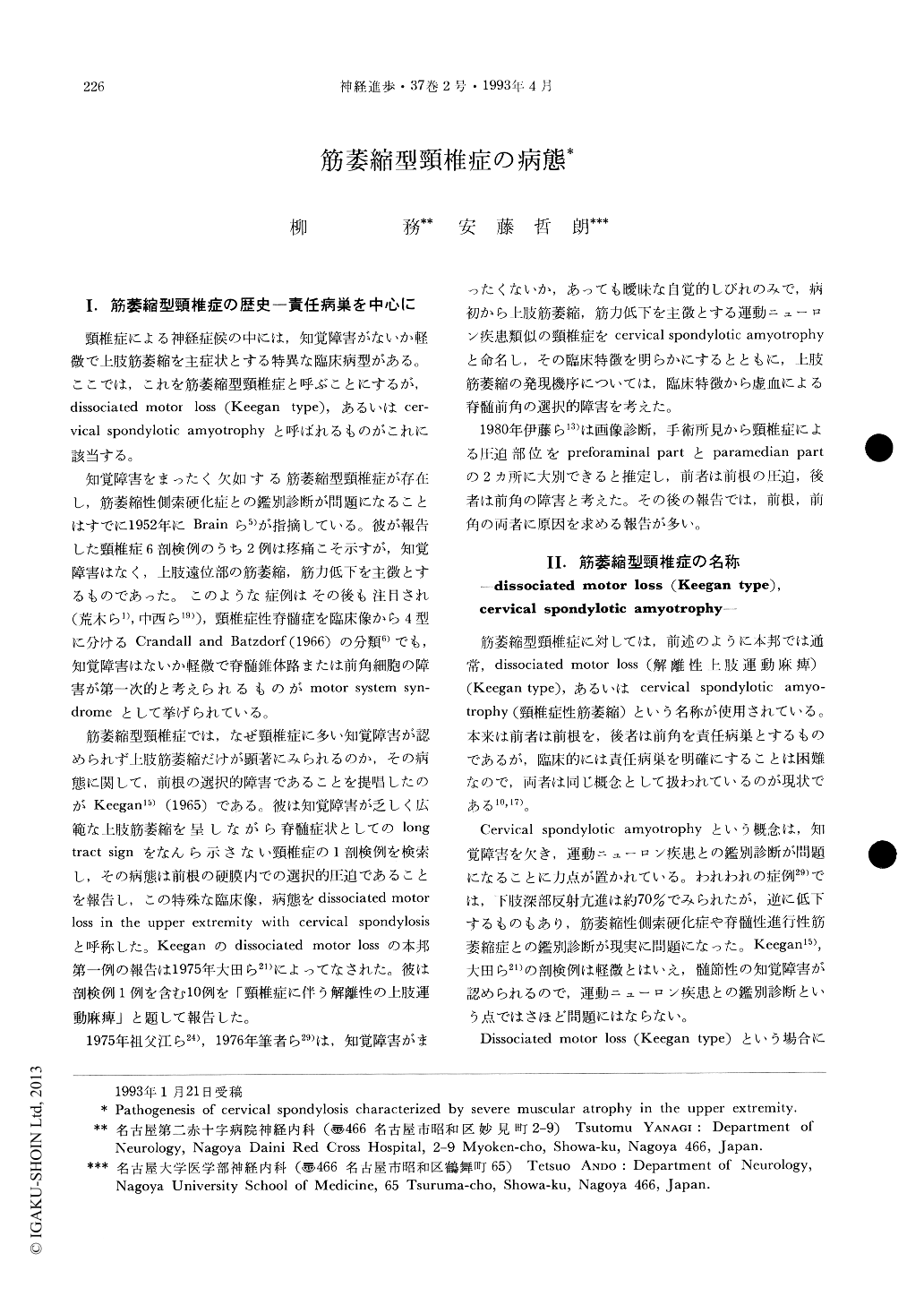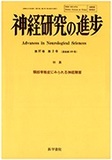Japanese
English
- 有料閲覧
- Abstract 文献概要
- 1ページ目 Look Inside
I.筋萎縮型頸椎症の歴史―責任病巣を中心に
頸椎症による神経症候の中には,知覚障害がないか軽微で上肢筋萎縮を主症状とする特異な臨床病型がある。ここでは,これを性萎縮型頸椎症と呼ぶことにするが,dissociated motor loss(Keegan type),あるいはcervical spondylotic amyotrophyと呼ぼれるものがこれに該当する。
知覚障害をまったく欠如する筋萎縮型頸椎症が存在し,筋萎縮性側索硬化症との鑑別診断が問題になることはすでに1952年にBrainら5)が指摘している。彼が報告した頸椎症6剖検例のうち2例は疼痛こそ示すが,知覚障害はなく,上肢遠位部の筋萎縮,筋力低下を主徴とするものであった。このような症例はその後も注目され(荒木ら1),中西ら19)),頸椎症性脊髄症を臨床像から4型に分けるCrandall and Batzdorf(1966)の分類6)でも,知覚障害はないか軽微で脊髄錐体路または前角細胞の障害が第一次的と考えられるものがmotor system syndromeとして挙げられている。
The clinical syndrome has been examined in cases of cervical spondylosis characterized by severe muscular atrophy in the upper extremity with absent or insignificant sensory deficit. These cases resemble motor neuron disease in some features. Keegan (1965) investigated one autopsy case with such neurological symptoms and called this particular clinical syndrome “dissociated motor loss in the upper extremities with cervical spondylosis”. He concluded that its causative pathology was selective compression of the ventral motor roots intradurally. In 1965, we named this clinical syndrome “cervicalspondylotic amyotrophy (CSA)” and suggested that the mechanism of its development involved selective damage of the anterior horn of the spinal cord. The main clinical features of CSA are as follows:

Copyright © 1993, Igaku-Shoin Ltd. All rights reserved.


